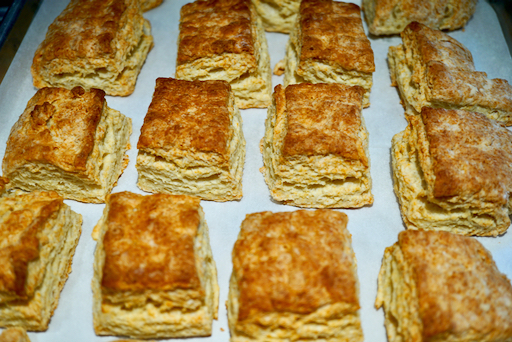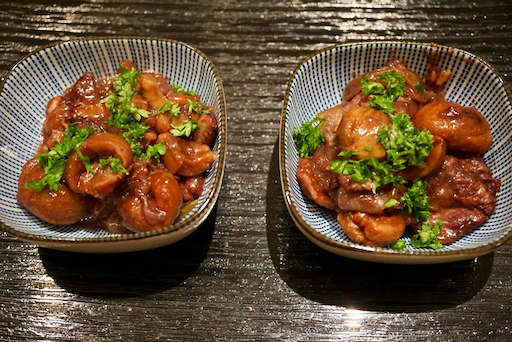When we traveled to Japan, we ususally chose late spring early summer to avoid the rainy 梅雨 and typhoon 台風 seasons. We could not handle the heat and humidity of summer months. Over the years, we made some exceptions. We visited Japan once in winter to attend New Year with my family and twice in late September and October just barly evading typhoons (in 2013 and 2017). It is nice to visit Japan in fall, since it is the harvest season with great produce especially fruits and vegetables. Seeing golden rice paddies at sunset from the Shikansen is something to remember. In addition, we could enjoy seasonal sake only available in the fall which is the main point of this post.
In 2013, we visted “Tako Grill” in Kuroishi 黒石, Aomori 青森. Chef Kudo 工藤 opened this Japanese Tako Grill after he left “Tako Grill” in Bethesda and went back to his home town in Japan. When we visited, he served us local Kuroishi sake “Kikunoi Akiagari” 菊乃井 秋あがり. We really liked this sake. We liked it so much Chef Kudo had to send a waitress out to get more from the brewery since we drank what he had at hand.
The “Hiyaoroshi” 冷やおろし or “Akiagari” 秋あがり is a seasonal sake and is only available in the fall. My undestanding is that the sake is brewed during the winter and bottled in the spring. It is pasturized or “hi-ire” 火入 and then stored in a cold environment until fall when outside temperatures get cold. Up until now we thought the only way we could enjoy “hiyaoroshi” was to go back to Japan in the fall. Now, we discovered we can get “hiyaoroshi” sake in the U.S. from Tippsy sake. Recently we got two hiyaoroshi from them; one is “Otokoyama” from Asahikawa, Hokkaido 男山、旭川 (right) and Koshi-no-homare from Niigata 越の誉, 新潟 (left). Both are junmai class sake.

We first tasted "otokoyama" (meaning "manly mountain") . The label shows what looks like baby seals drinking sake. (We momentarily contemplated whether this image suggested under-age drinking…by seals)? This is a very nice sake. Although it is "tokubetsu junmai", it does not have any yeasty smell/taste but is rather dry with rich complex flavor and some fruitiness up-front. We had this with imitation negitoro and it went very well.
The next evening, we had "Koshi-no-homare" (meaning "pride of Echigo 越後" - old name for Niigata). Reportedly, this sake was buried under snow for 250 days. A snow crystal is the only image on the label. This sake tasted a bit lighter up-front than the "otokoyama". It has nice after-taste flavors. We had this with an assortment of drinking snacks.
Although we tend to favor "Otokoyama" (and that is not just because I am from Hokkaido), we are very happy with either one. It is so nice that Tippsy sake brought "hiyaoroshi" sake to U.S.





















